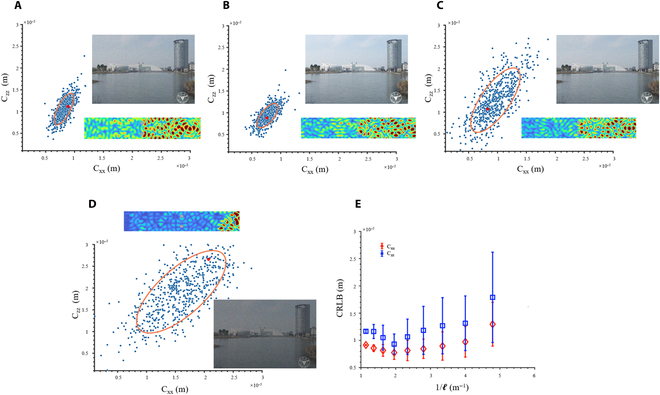Fig. 5.

Toward the Fisher information limit using the Neuroute. The Cramér–Rao lower bound (CRLB) pertaining to the Neuroute information states is presented. Additionally, the Neuroute morphologic patterns associated with the red dot and the images’ multiplexing transmission effects corresponding to the ellipses are depicted. (A) The CRLB distribution in the case of 1/l = 1.4 m−1, corresponding to the scenario with extremely small scattering, where l represents the mean free path of the wave field. (B) The CRLB distribution in the case of 1/l = 2 m−1, corresponding to the scenario with optimal scattering. (C) The CRLB distribution in the case of 1/l = 4 m−1, corresponding to the scenario with large scattering. (D) The CRLB distribution in the case of 1/l = 5.8 m−1, corresponding to the scenario with extremely large scattering tending to the Anderson localization. (E) The relationship between CRLB of 2 directions and the degree of scattering 1/l. Each point denotes the geometric mean of 700 corresponding Neuroute tested for each scattering degree, and error bars represent 1-sigma intervals.
